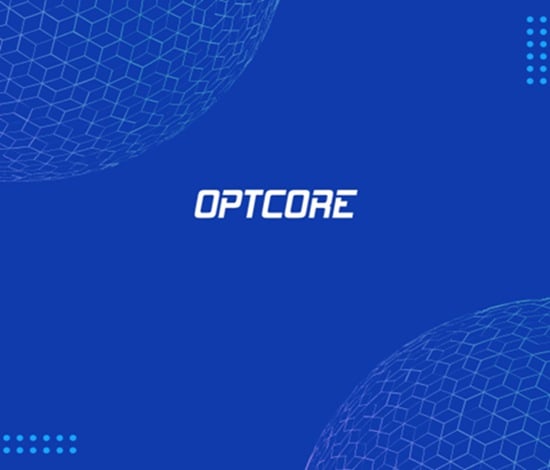Optical Transceiver
What You Need To Know About Compatible Transceiver Module
IT managers make up a huge chunk of networking cabling and you can thank the big switch brands for that. Ethernet switch manufacturers may sell switches at low prices but their profit really comes from optical transceiver sales. You’ll find that after buying a couple of optical transceivers you’ve spent nearly as much as you bought the network switch for.
Just a few years ago, using a genuine brand-name optical transceiver was the only way for Ethernet switch what you need in the networking. Back in the era of third-party compatible optical transceivers, the results were inconsistent. Today, however, technology has caught up a great deal and you can now get similar fiber connectivity performance for a whole lot less using alternative optical transceiver options. Compatible optical transceivers–purchased through reputable vendors or manufacturers – are designed and tested to match the high-quality standards of genuine brand transceiver optics. Some compatible transceivers even use many of the same component pieces as their much-more-expensive brand name counterparts to keep the same quality and performance.
What are compatible optical transceivers?
Compatible optical transceivers are called different things by different companies. Some outlets sell them as third-party optical transceivers, other as generic alternatives. The compatible optical transceivers are totally new low-priced replacements for genuine brand optical transceivers that with a much higher price. Each transceiver is tested and coded to meet the specifications of the original transceiver. Brand new compatible optical transceivers, however, have been built with 100% new components.
How are compatible optical transceivers made?
The good folks at Optcore, a leading optical transceiver manufacturer, describe it this way:
- Purchase brand new materials including Optical TOSA, ROSA, IC, PCBA, resistor, and capacitors, and then inspect each item separately and ensure that they comply with relevant technical standards. When these materials are tested, they are stored in temperature and humidity-controlled spaces to ensure that product performance is not affected. Then arrange the production of an Optical transceiver as needed.
- At the ISO90001 compliant plant, arrange the production of this compatible transceiver. Compatible transceiver’s performance should be as close as legally possible to the Brand name transceiver without violating copyright law (note that this is very important)
- Test the replacement transceiver compatibility and bit error on original brand switches/routers, like the original brand transceiver was manufactured. To ensure that the compatible transceiver has the same performance and quality as the brand original transceiver.
- After passing the test, the worker will clean up the end-face of the third-party compatible transceiver again, pack it and ship it to the customer.
What is the difference between third-party and brand original OEM transceiver?
There are very few differences between OEMs and third-party transceivers except the price. Because all transceiver modules are made according to the transceiver MSA multi-source agreement. One important difference is that the vendor ID in EEPROM is reset to a vendor-owned system. This means that the connected transceiver must have the appropriate EEPROM code, which can be used with original OEM vendor devices. Another important difference is the price, the third-party transceivers are usually affordable, just a fraction of the original transceiver price that allows you can save more.
What about the warranty?
A common and perhaps biggest concern for many IT managers about using compatible transceivers is whether it invalidates the network equipment (ex switches and routers) warranty. It is generally accepted that the use of non-branded transceivers voids the repair and protection of packaging under warranty. This is not the case. The Magnussen-Moss Warranty Improvement Act was signed in 1975 to prevent merchants from abusing warranties and disclaimers, including any rules that force consumers to buy their products (only their products!). To such a long story short, you are free to put any transceiver you want into your network device without voiding your warranty.
Are compatible optical transceivers reliable?
If you get your optical transceivers from a reliable vendor, your chances of getting reliable products are higher. Buying the least expensive optical transceivers available online isn’t the best way to ensure reliability—many are manufactured in substandard facilities using technology that’s not up to speed with modern switches. Getting your optical transceivers from a reputable distributor or reseller will help ensure the quality of your optical transceivers. Reputable vendors and distributors only provide industry-leading compatible optical transceivers manufacturers who pay attention to quality first before profit. Look for reviews online of the product and seller to get an understanding of the quality of the products available for your specific network equipment model.
Having said that, even the original brand-name optical transceiver sometimes fails, so buying a compatible optical transceiver from a company with a responsive customer service rating will help you get the optical transceiver you need quickly.
How do I find a trusted third-party compatible transceiver vendor?
Perhaps you may ask, how to choose a trusted high-quality third-party supplier? First, the overall qualification assessment. A trusted third-party compatible vendor needs to invest in integrated equipment such as Ethernet switches and routers, the ability to test environments, a wealth of experienced staff, and a comprehensive record of test parameters and results. In addition, compatibility issues will plague many users. Maintenance and other after-sales services are therefore essential. If there is a problem with the compatible optical transceiver, a team of professional staff is also required to answer the technical advice.







